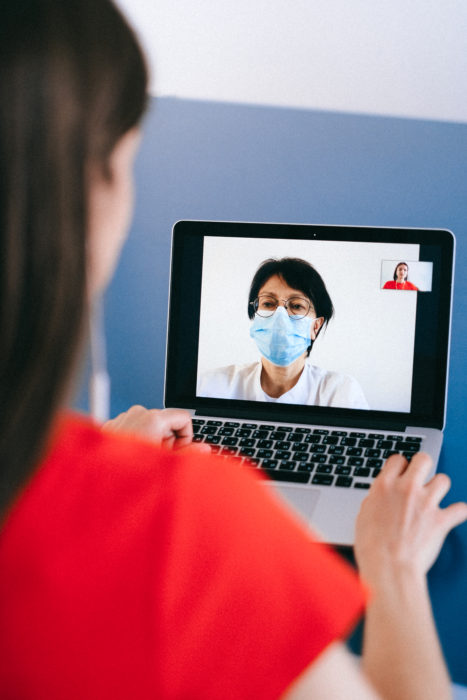By Garrett Freeberg (UX and Content Writer)
As technology advances and we transition from the Information Age into what some are calling the “Experience Age”, we continue to see how technology plays a significant role in our mental health.
“Technology has opened a new frontier in mental health support and data collection. Mobile devices like cell phones, smartphones, and tablets are giving the public, doctors, and researchers new ways to access help, monitor progress, and increase understanding of mental wellbeing”, the National Institute of Mental Health says.
Prisons are one of the places where we’ve seen a dramatic increase in the use of technology for health intervention, specifically through the development of Telemedicine. A cost-effective means of connecting doctors and patients, Telemedicine has been used since the 1980s but is being used more increasingly with the quality of technology improving.

Recently retired psychiatrist, Dr. Paneque, who has over 20 years of experience working as both a general, and forensic psychiatrist for Norristown State Hospital in PA, and for George W. Hill correctional facility in Thornton, PA, spoke favorably of Telemedicine – specifically Telepsychiatry, in prisons.
“In my experience working in a correctional facility and giving psychiatric evaluations, the biggest challenge I faced was that they [incarcerated persons] were often unwilling to share their feelings…however, and I’m not sure why this is, but with evaluations using Telemedicine, I often saw more willingness to share,” he said.
Although Dr. Paneque said he couldn’t be sure exactly why these telepsychiatric evaluations put his patients at ease, he recognized the benefits they had for both doctor and patient.
“It definitely seemed to make evaluations easier and safer for all parties involved.”
When asked if he had any best practices or strategies that made the process of using Telemedicine or technology in general in prisons easier, he conveyed an emphasis on communication and collaboration.
“It worked best when the prison staff and I communicated well. Whether it was a nurse or another staff member, that communication helped bridge the gap and make-up for any disconnect that may have occurred,” Paneque said.
“Participation in lifelong learning had effects upon a range of health outcomes; well‐being, protection and recovery from mental health difficulties, and the capacity to cope with potentially stress‐inducing circumstances including the onset and progression of chronic illness and disability.”
Centre for Research on the Wider Benefits of Learning
While the increased use of Telemedicine is one way we’ve seen technology play a significant role in the mental health of incarcerated persons, we’ve seen how education through technology can play a role as well.
According to the Journal of the International Corrections and Prisons Association, the use of distance learning, which heavily involves technology, has proven beneficial to incarcerated persons mental health.
“Prisoners who had studied through distance learning had increased cognitive ability and new pro-social thinking patterns, giving them the ability to express themselves more effectively and negotiate agreed outcomes without having to resort to violence.”

While there are numerous studies, linking vocational and educational programs to the reduction of recidivism of over 40%, it’s also important to look at how these types of programs could be positively impacting incarcerated persons on a more micro level. Even for those serving life sentences, education through technology can still be beneficial.
Lifelong learning plays a role in human emotional resilience and psychological and mental health. A fieldwork study conducted in 2002 by the Centre for Research on the Wider Benefits of Learning showed that it had an array of benefits.
“Participation in lifelong learning had effects upon a range of health outcomes; well‐being, protection and recovery from mental health difficulties, and the capacity to cope with potentially stress‐inducing circumstances including the onset and progression of chronic illness and disability.”
Dr. Paneque, when asked about the benefits of education through technology within the prison system, responded, “Listen, they [incarecated persons] just want to get out of their cells and do something stimulating. They’re hungry for knowledge, they’re eager to better themselves.”

Garrett Freeberg finds human-centered ways to convey information and challenging concepts. He is a web and digital content writer from the Bay Area furthering his career in technology by transitioning into UX Writing and Content Strategy.





